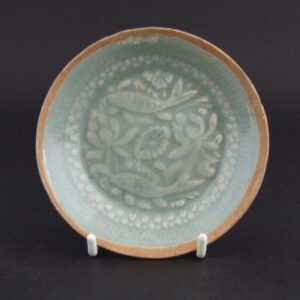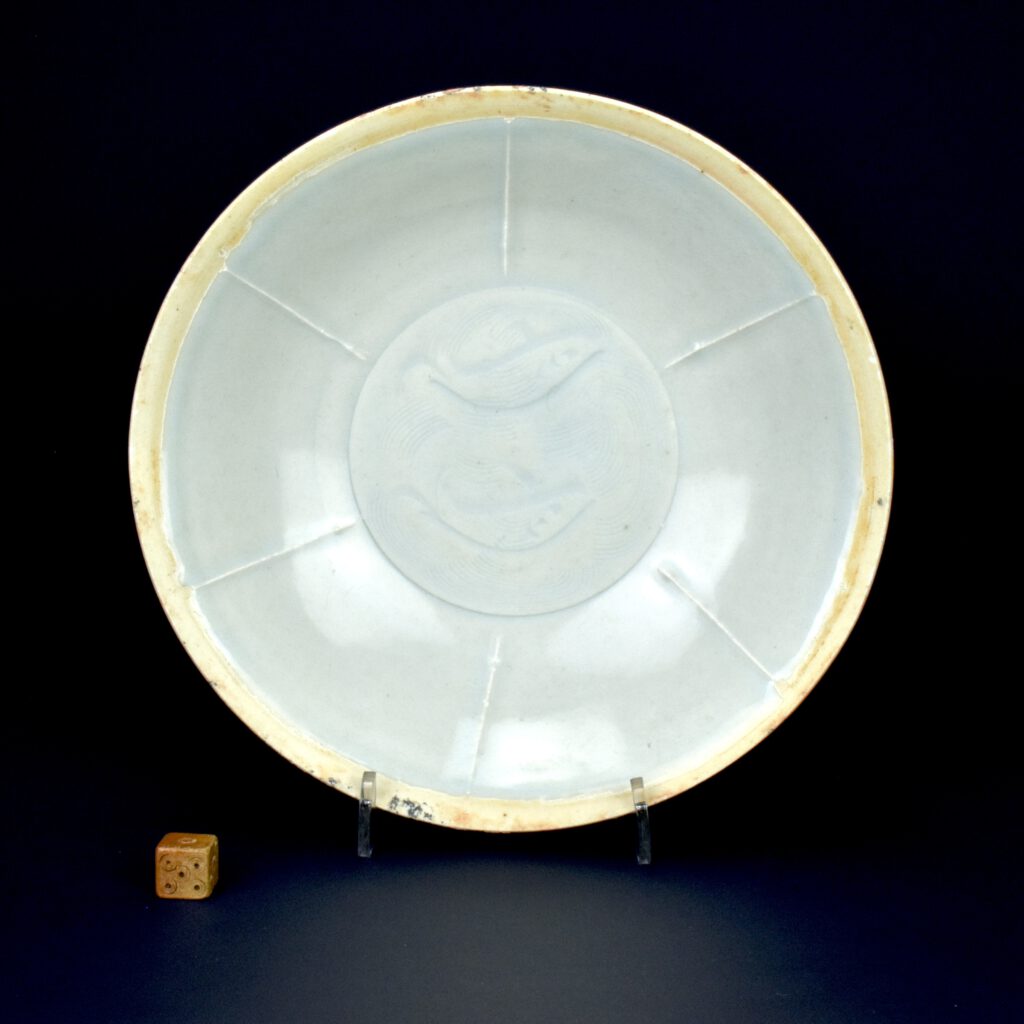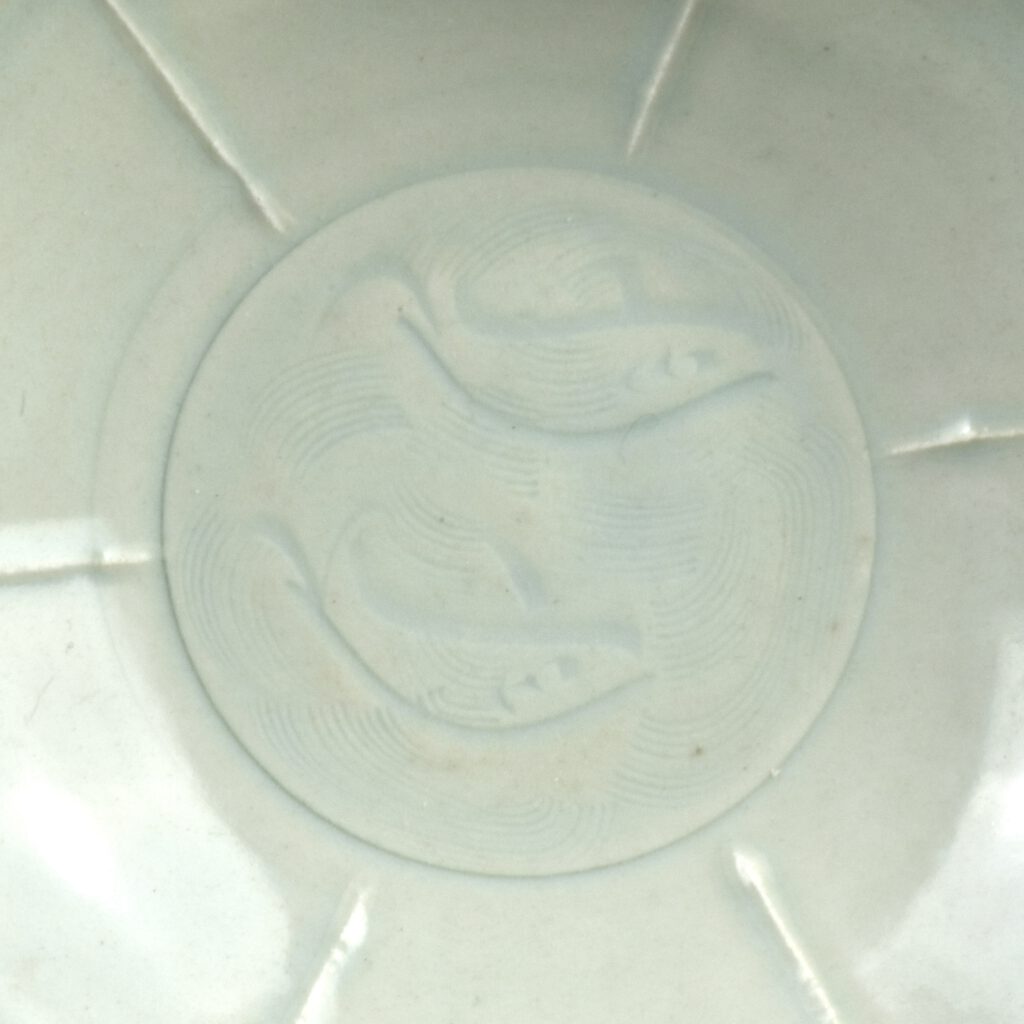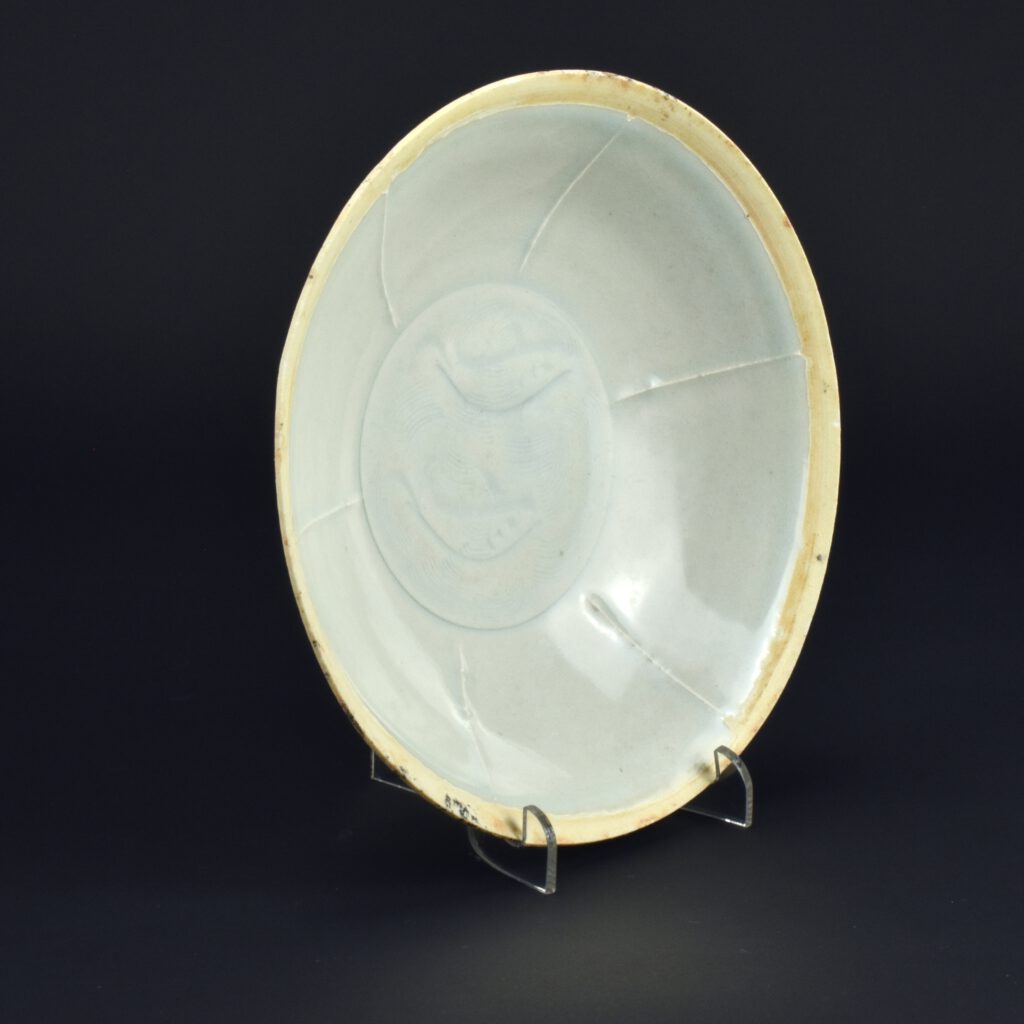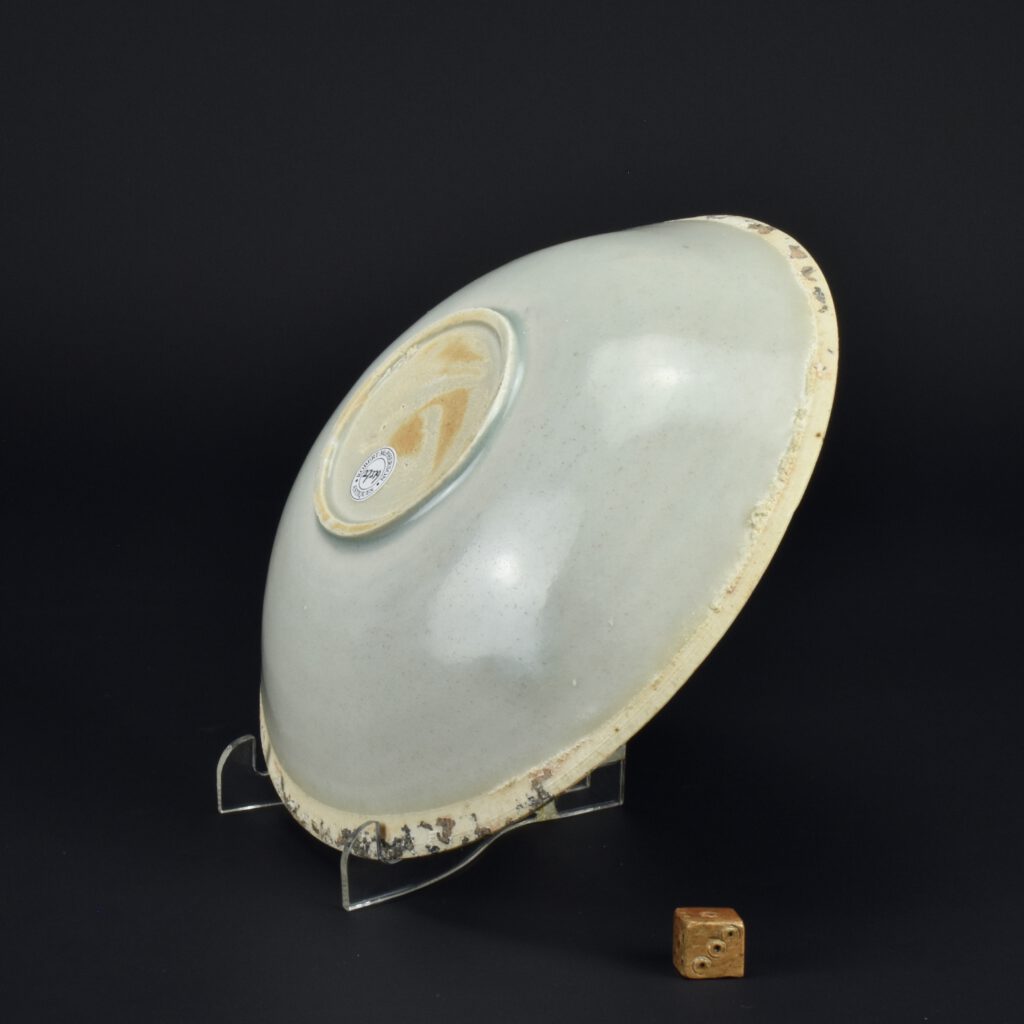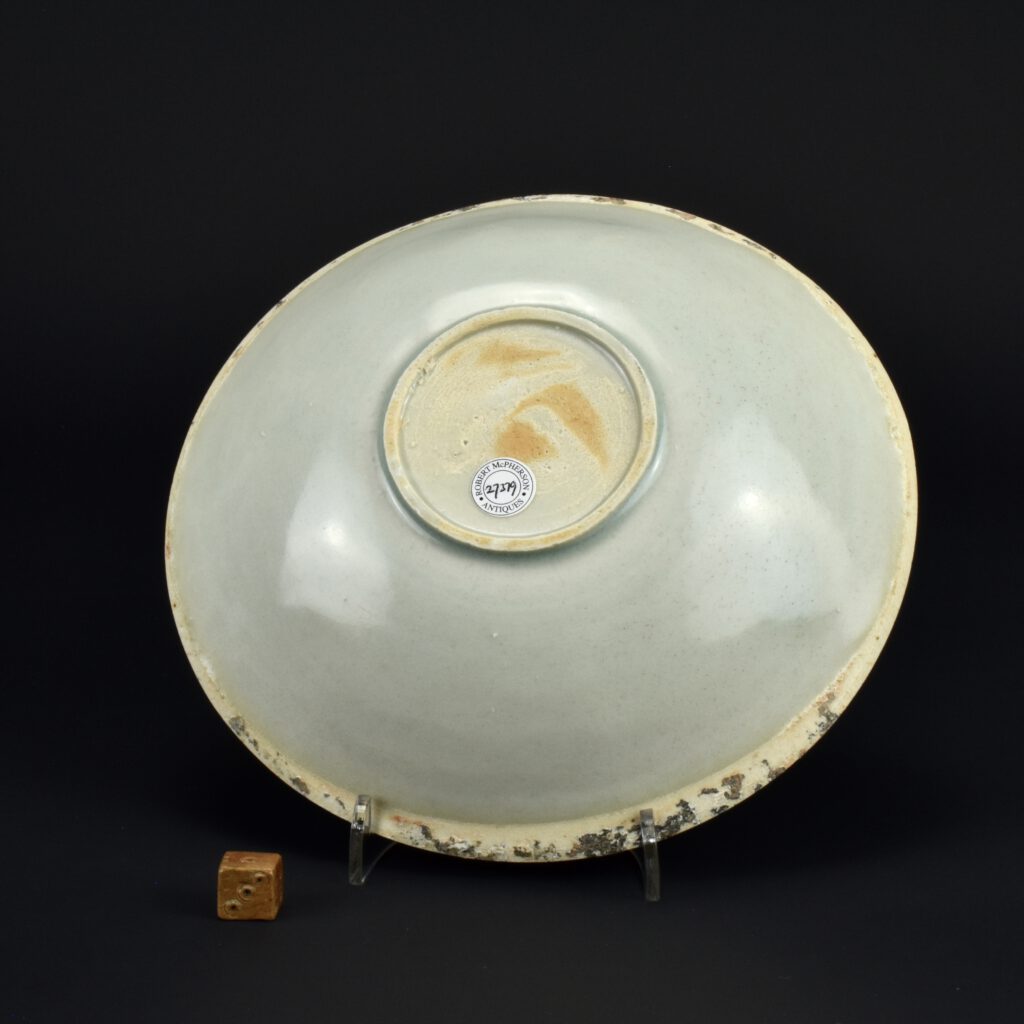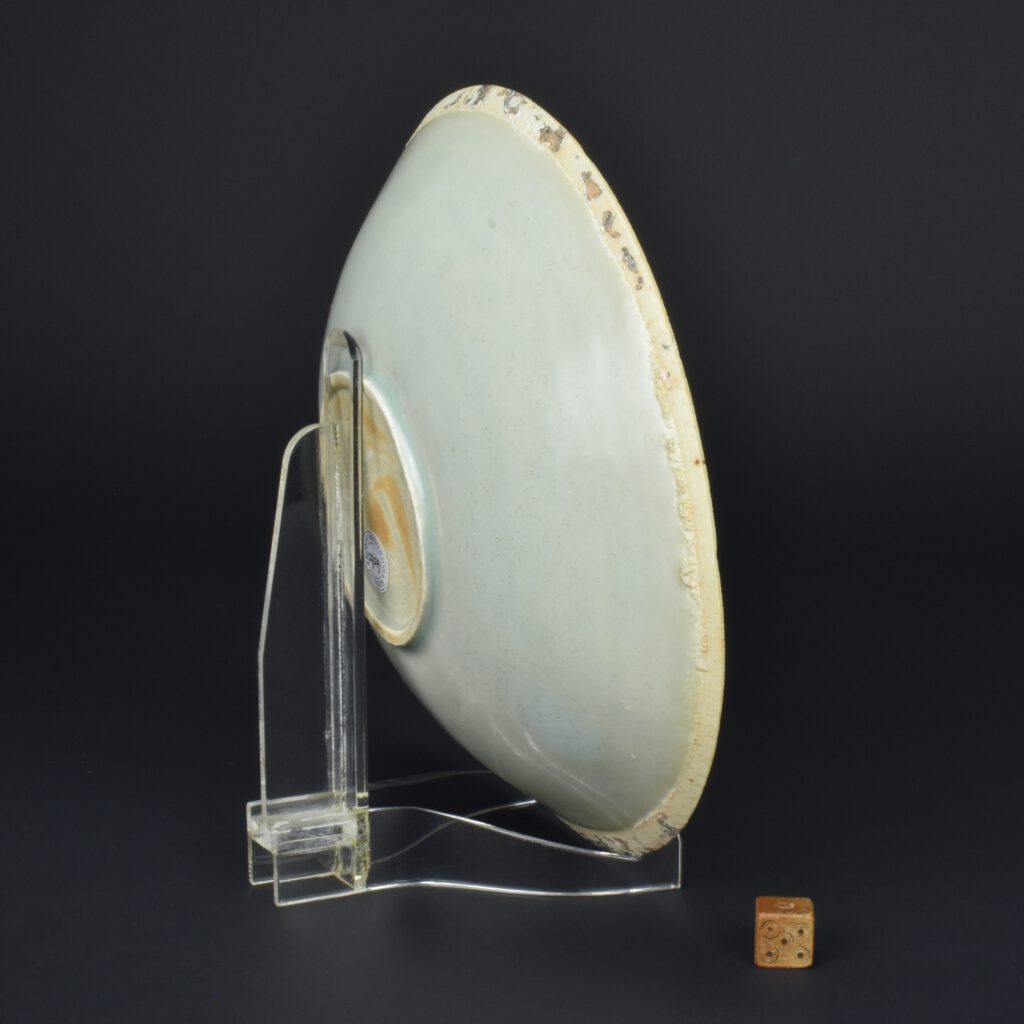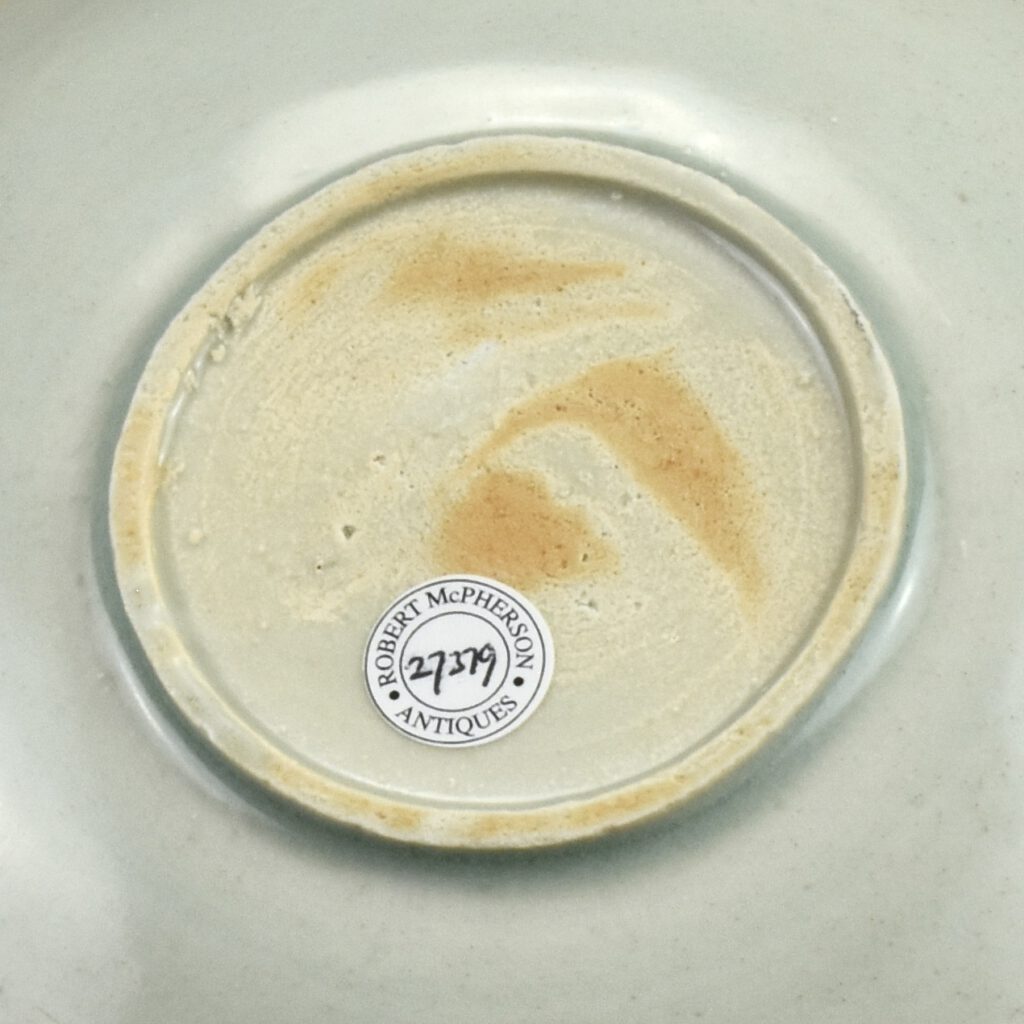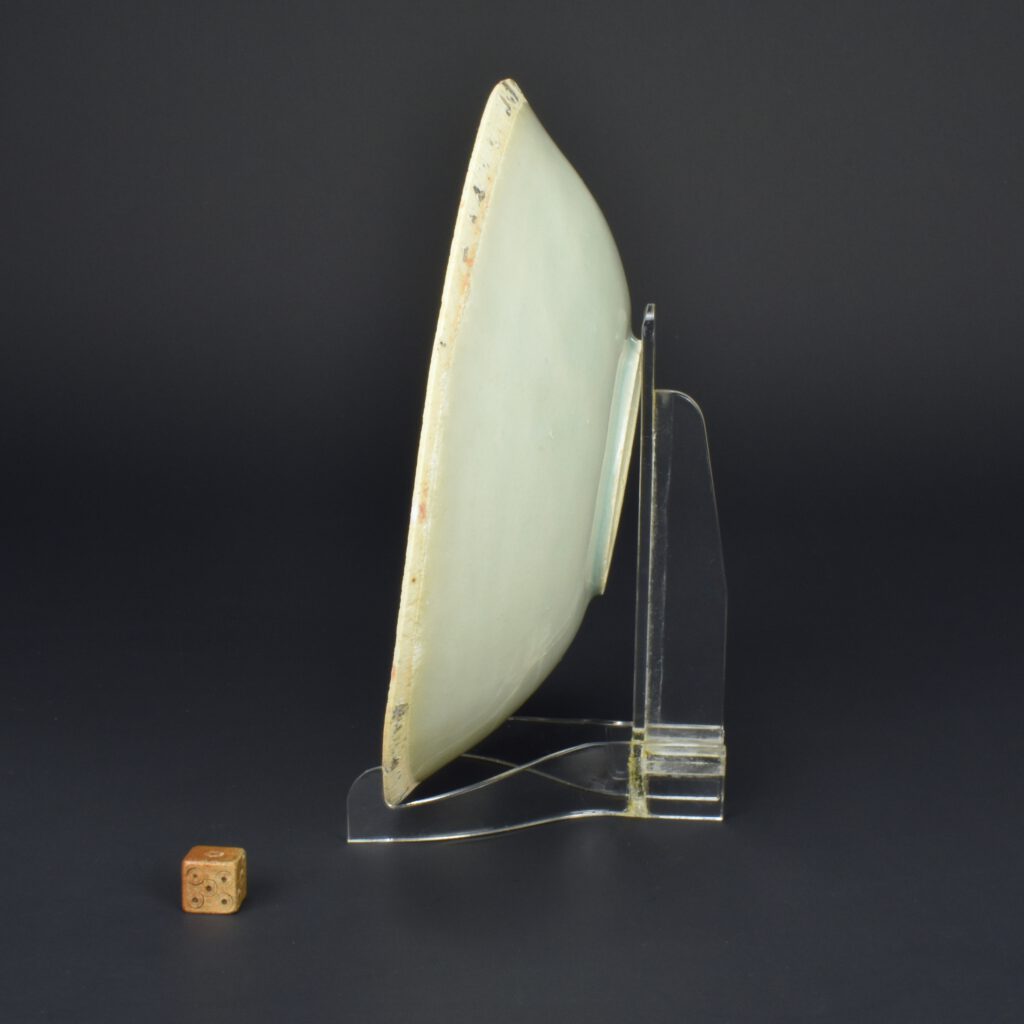
A Fine Song Qingbai Ware Twin Fish Bowl
A Fine Song Qingbai Porcelain Carved Twin Fish Shallow Dish, probably from the Hutian Kilns, Jingdezhen, 12th or 13th Century. This well potted, rather light Song porcelain bowl was shaped over a mould and then biscuit fired. This produced the general form with six ribs, the center was then rapidly carved and combed, it was glazed, and its second firing created the object we see today. The center is carved with two fish swimming in the same direction, the glaze is even and not particularly thick, so the carved fish and combed waves appear clear and sharp. Originally, the edge which has been wiped clean of glaze would have been given a metal covering, these have almost all gone missing, sometimes tiny remnants of the corroded metal are left. The thin metal was designed to hide the edge on which the piece was fired. Once it was covered there was no sign of a kiln support to be seen, as the unglazed rim was what supported the piece in the kiln, this was very practical as the whole rim was supported evenly, therefore it was far less likely to end up distorted in the heat of the kiln. The Chinese word for fish Yu is pronounced in the same way as the word for abundance. So fish have come to represent prosperity and the carp is often represented as sign of success because of its perseverance, swimming up river. Pairs of fish swimming together, representing marital bliss, were common from the Southern Song (1128-1279) but it was in the Yuan Dynasty (1279-1368) that fish swimming with aquatic plants became a common subject, the patterns were based on popular designs found in Southern China. Some of the earliest Chinese blue and white porcelain (c.1320-1350) depicts fish swimming with plants, frequently lotus as this represented purity. These Yuan designs were shown in the center of bowls and dishes surrounded by concentric geometric borders. It was not until the 16th century that freer, more open designs of fish swimming among seaweed and crabs were popular
See Below For More Photographs and Information.
SOLD
- Condition
- In excellent condition, very minor wear, some corroded metal adheres from the original metal covering the unglazed rim.
- Size
- Diameter 18 cm (7.1 inches) Height 4.2 cm (1.65 inches).
- Provenance
- From an old Private Greek Collection.
- Stock number
- 27279
- References
- For a pair of very similar Qingbai bowls attributed to the Hutian kilns see : Chai & Hutian Kiln, (Nanning Publishing? 2004. ISBN 7-80674-591-2) page 158. For a very similar Southern Song Qingbai bowl see : Chinese Ceramics from the Meiyintang Collection Volume 1 (Regina Krahl, Azimuth Editions, 1994) Page 331 plate 613
Information
Qingbai Ware
The earliest known qingbai wares were produced in Jingdezhen in Jiangxi province around the late 10th century and are characterized by faint pale-blue glazes on low, wide forms. Qingbai continued to be enormously popular and highly produced throughout the Song dynasty (960-1279) and was prevalent in the Yuan dynasty (1279-1368), but slackened during the Ming dynasty (1368-1644) until being replaced by tianbai, ‘sweet white’ ware. The initial forms of qingbai were simple bowls and dishes, but by the mid-Northern Song the forms had advanced to include a wide variety of objects used for daily life such as ewers, boxes, incense burners, granary models, vases, jars, sculptures, cups, cupstands, water droppers, lamps, grave wares, and tools for writing and painting. The precedent for the majority of these forms is found in earlier metalwork and lacquer and Rawson has suggested that the imitation of silver was the primary force behind the production of white wares, including qingbai. See our `History` section for more information about Song Porcelain and Stoneware by Mindy M. McDonald.
A Very Similar Song Qingbai Twin Fish Bowl
Robert McPherson Antiques - Sold Archive 22524.
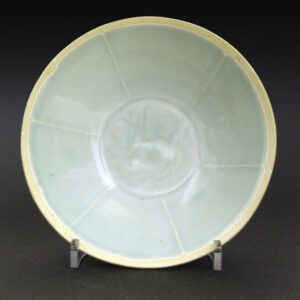
A Fine Song Qingbai Porcelain Flower Deep Shaped Porcelain Bowl, Probably from the Hutian Kilns Jingdezhen, 12th or 13th Century. Thinly Potted, the Center Carved with Twin Fish, the Rim with the Deeply Coloured Glaze Wiped Clean.
SOLD
Condition
In very good condition, minute rim frits to the rim, the largest of these very shallow frits is 2 x 2mm.
Size
Diameter : 18.4 cm (7 1/4 inches).
Provenance
From a Private English Collection of Chinese and Japanese ceramics.
Stock number
22524
References
References : For a pair of very similar Qingbai bowls attributed to the Hutian kilns see : Chai & Hutian Kiln, (Nanning Publishing? 2004. ISBN 7-80674-591-2) page 158. For a very similar Southern Song Qingbai bowl see : Chinese Ceramics from the Meiyintang Collection Volume 1 (Regina Krahl, Azimuth Editions, 1994) Page 331 plate 613
A Similar Song Qingbai Twin Fish Dish
Robert McPherson Antiques - Sold Archive 23889.
